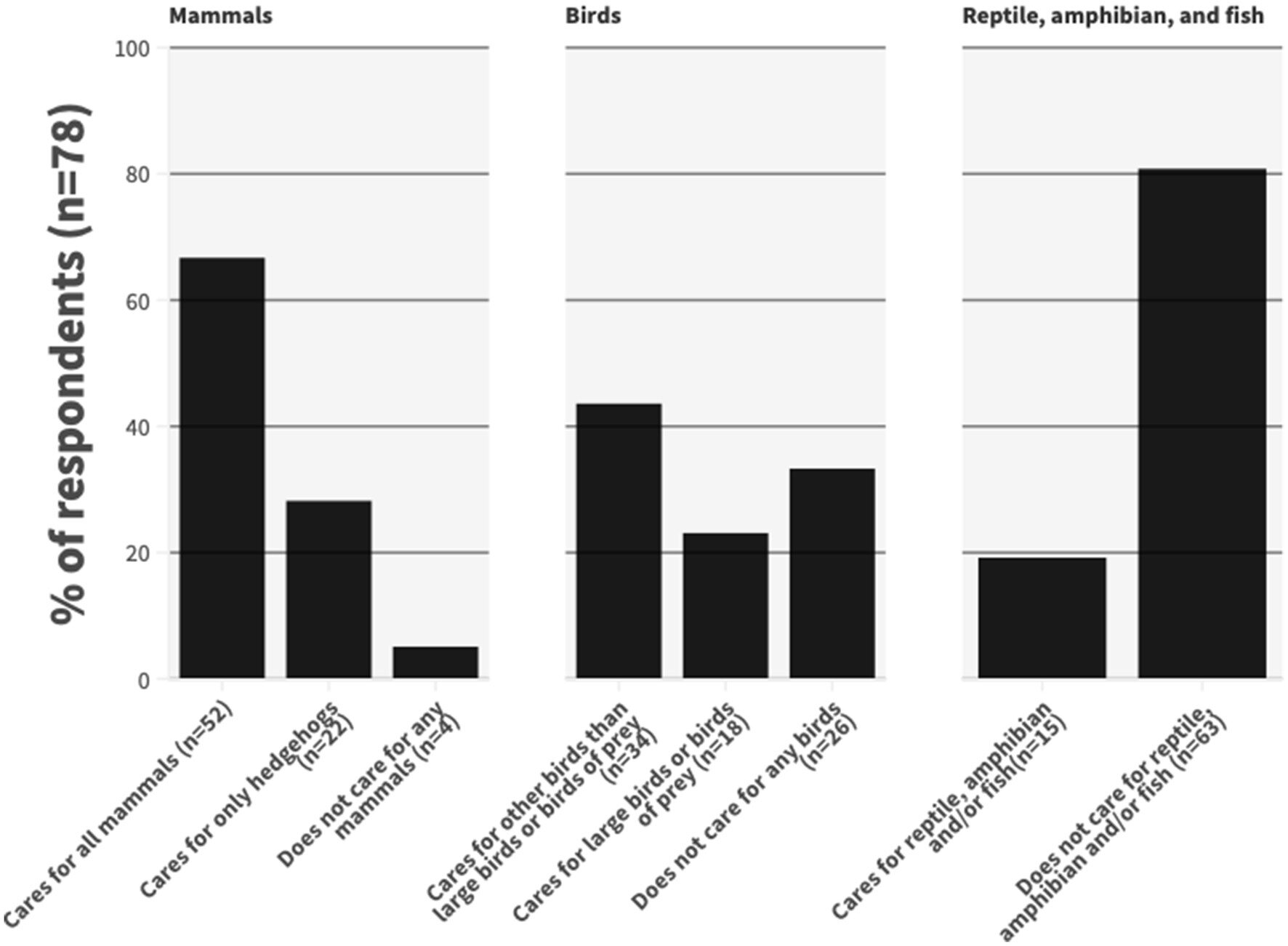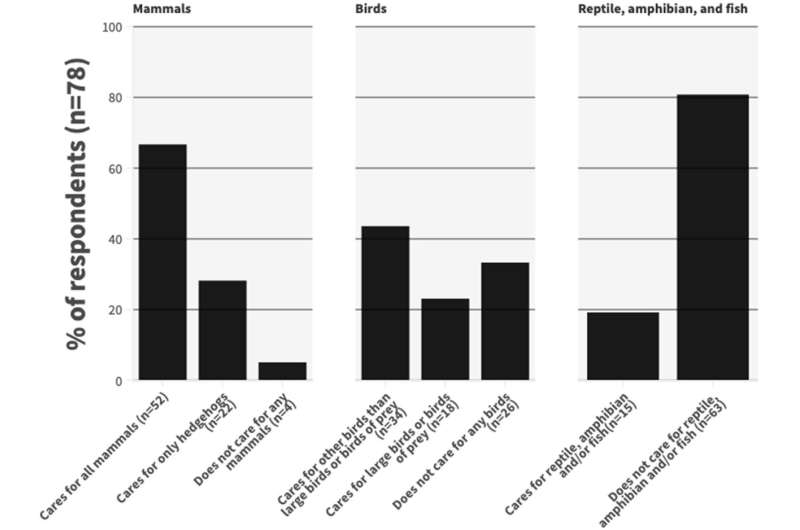

A joint study carried out at the Faculty of Veterinary Medicine, University of Helsinki, and SEY Animal Welfare Finland investigated the treatment of injured and sick wildlife as well as associated factors. The care of wild animals is a significant element of animal welfare efforts in Finland, involving both zoos and voluntary operators. The study was carried out through an online survey and is published in Frontiers in Veterinary Science.
The study indicated that the species of wild animal affects caregiving decisions. The most commonly treated animals are mammals and birds, while the groups receiving the least care include reptiles, amphibians and fish. Hedgehogs stand out clearly as a group, as many respondents said they typically only treat hedgehogs.
“The respondents who provided care to hedgehogs often did not have formal animal-related training or long-term experience in wildlife care. Usually, they treated individual hedgehogs for injuries and to help them winter,” says Docent Laura Hänninen, study lead from the Faculty of Veterinary Medicine, University of Helsinki.
In Finland, animals are released back into the wild considerably more often than in other countries. According to the study, approximately 80% of the animals treated were returned to the wild. For mammals alone, that proportion was as high as 90%.
In contrast, the veterinarians who responded to the survey said that roughly 50% of the animals treated were released back into the wild, corresponding to the international level of control countries. However, most respondents did not keep a record of the animals they cared for.
“If the figures for animals released back into the wild are accurate, it is possible that they are subjected to care unnecessarily or released while still in poor health. Both cause suffering to animals.
“The lack of record keeping also makes it difficult to monitor care and develop processes. Respondents did not readily elaborate on training needs, which may mean that gaps in knowledge are not identified,” says Executive Director Kati White of SEY, the study’s principal investigator.
White believes it would be important to discuss further the ethics of caring for and rehabilitating wildlife, establishing uniform standards in the process. The Animal Welfare Act, which entered into force at the beginning of this year, requires record keeping of wildlife care.
“Wild animals experience strong stress and fear when captured by humans. Long-term stress in particular is significantly harmful to animal welfare and can also hinder survival in the wild following release.
“In other words, we should refrain from providing unnecessary care to animals, while the duration of any treatment periods should be as short as possible to avoid needlessly increasing their suffering,” White sums up.
More information:
Kati White et al, Reasons for admission and rehabilitation rates of various wildlife species in Finland, Frontiers in Veterinary Science (2024). DOI: 10.3389/fvets.2024.1455632
Provided by
University of Helsinki
Citation:
Wildlife care varies by species, Finnish study finds (2024, October 2)
retrieved 2 October 2024
from https://phys.org/news/2024-10-wildlife-varies-species-finnish.html
This document is subject to copyright. Apart from any fair dealing for the purpose of private study or research, no
part may be reproduced without the written permission. The content is provided for information purposes only.